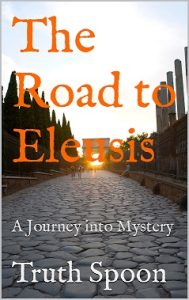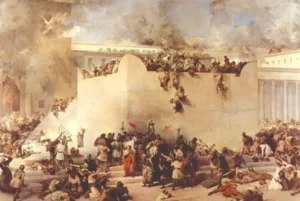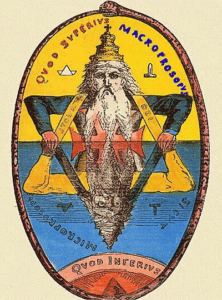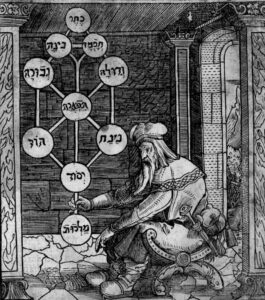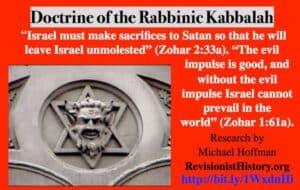
Official history records the first Freemasonic lodge was
founded on the 24th June 1717 at the Goose and Gridiron alehouse in London but
there has been a presence of Freemasonry prior to this date for several hundred
years, perhaps it is only in 1717 that Freemasonry effectively began its slow
emergence from the subterranean underground it had hitherto inhabited and
commenced the next stage of its long term, millennial plan.
In his book about ‘The Hiram Key’ Freemason Christopher
Knight states plainly that: “there appears to have been a significant
Freemasonic infrastructure in place in London, well before 1646.”
1646 is a significant date because it is on this date
that the first documented record of someone being initiated into Freemasonry
was made. On 16th October 1646, antiquarian and member of the Royal Society and
later founder of the Oxford Ashmolean Museum of Art and Archaeology at Oxford, Elias
Ashmole in his dairy records:
“I was made a Free Mason at Warrington in
Lancashire, with Coll: Henry Mainwaring of Karincham in Cheshire.”
At this date during the English Civil War Warrington was
a stronghold of the Parliamentarians and Colonel Henry Mainwaring was a
Roundhead Parliamentarian friend of Ashmole’s father-in-law. Ashmole was
interested in Hermetic studies and Alchemy and published several books on the
subject.
The following is from the website of the Societas
Rosicruciana in Anglia which seems to be some kind of international rival to
the largest Rosicrucian organisation in the word, the mighty AMORC founded in
1915 and preceded by the Societas Rosicruciana which was founded in 1865 by
Robert Wentworth Little and recruits from among Master Masons while AMORC is a
group which seems to require little more than the completion of an online
application from and the payment of annual dues of £246. They seem to organise
open-evenings at UK Friends House, UK headquarters of the Quakers opposite
Euston Station in London and as a Quaker myself I am surprised that they are
happy to throw their lot in with a quasi-Satanic Kabbalistic organisations like
this one, but I also saw Benjamin Crème at Friends House going on about his
daft Maitreya but I suppose he had to pay the Quakers for the use of the room
and presumably they put the money to good use.
Quoting from the Societas Rosicruciana website:
“Some Masonic historians believe that modern Speculative
Freemasonry owes much to the Rosicrucian movement. Certainly, the earliest
recorded speculative Freemasons in England, Sir Robert Moray and Elias Ashmole,
if not themselves Rosicrucians, were deeply interested in Rosicrucian
philosophy and ideals – ideals that perhaps provided their motive for
establishing The Royal Society. The Rosicrucian Society of England was founded
in 1867 by the freemason Robert Wentworth Little and six other brethren
following the discovery of certain manuscripts in the archives of Grand Lodge.
Many eminent and scholarly masons have been members of the Order.”
Initiated into Freemasonry in 1771 the German poet
Gotthold Ephraim Lessing in 1778 wrote five dialogues on Freemasonry entitled:
“Ernst und Falk: Conversations for Freemasons.”
From Secret Societies and Subversive Movements:
“The dialogues between Ernst and Falk throw a curious
light on the influences at work behind Freemasonry at this period and gain
immensely in interest when the identity of the two men in question is
understood. Thus Ernst, by whom Lessing evidently represents himself, is at the
beginning not a Freemason, and, whilst sitting with Falk in a wood, questions
the high initiate on the aims of the Order. Falk explains that Freemasonry has
always existed, but not under this name. Its real purpose has never been
revealed. On the surface it appears to be a purely philanthropic association,
but in reality philanthropy forms no part of its scheme, its object being to
bring about a state of things which will render philanthropy unnecessary…As an
illustration Falk points to an ant-heap at the foot of the tree beneath which
the two men are seated. ‘Why,’ he asks, ‘should not human beings exist without
government like the ants or bees?’ Falk then goes on to describe his idea of a
Universal State, or rather a federation of States, in which men will no longer
be divided by national, social, or religious prejudices, and where greater
equality will exist.”
What is interesting again is that same refrain, the same
tune and the same words, whether it be spoken by elite Chewish Freemasons or
messages apparently beamed into people’s heads by aliens.
In the dialogues is the hint that Freemasonry is
controlled by something far older and most Freemasons have no idea what is
really happening or what they are involved with. And that as Falk himself as a Chew, does not attend Masonic lodges and that Freemasonry does not exist in an
‘outward form’ and he says:
“A lodge bears the same relation to Freemasonry as a
church to belief.”
And Webster Nesta’s comments:
“In other words, the real initiates do not appear upon
the scene. Here then we see the role of the “Concealed Superiors.”
It seems clear then that it is made explicit that Falk,
as a Kabbalist Chew, is one of the elect ‘concealed superiors’ of Freemasonry,
however he does not attend the lodges and exist as a ‘hidden master’.
The Freemason Andrew Michael Ramsey states that
Freemasonry was created by the Crusader knights, stating that medieval
crusaders, likely the Knights Templar, founded Freemasonry. But there is a myth
of an even earlier foundation according to Freemason Henrik Bogdan in his paper
entitled An Introduction to the High Degrees of Freemasonry:
“The name Heredon, more commonly spelled as Heredom (and
sometimes as Harodim), is the name given to a mythical mountain supposed to
exist north of Kilwinning, Scotland. According to a Masonic myth, associated
particularly with Ecossais Masonry, the Masons were driven away from Jerusalem
after the destruction of the Temple of Jerusalem and subsequently found their
way to this mountain in Scotland. They remained on this mountain until the time
of the Crusades.”
Lodge Mother Kilwinning is generally held to be the
oldest Masonic lodge in the world and has its origins in the 12th Century,
almost 500 years prior to Freemasonry’s supposed creation in London at the
Apple Tree Tavern in 1716. Freemasonry in Scotland supposedly developed under
the reign of King David I and the Heredom degree with a Rosy Cross degree
originating in 1314 following the Battle of Bannockburn which has long been
rumoured to have been decisively won in Scotland’s favour due to the
intercession of a band of mysterious knights who may have been the Knights
Templar.
One of the earliest known reference to the Rosicrucians
was in a poem The Muses Threnodie from 1638 by Scotsman Henry Adamson:
“For we be brethren of the Rosie Crosse,
We have the Mason
word, and second sight,
Things for to come we can foretell aright..”
Robert Fludd wrote several works on the Rosy Cross in the
early 17th century; Fludd has also been called ‘the Father of Freemasonry’.
Robert Fludd spent time studying with the Jesuits in Pyrenees. His theory of
the ‘tripartite’ nature of creation where he believes that ‘the divine light’
was the active agent responsible for creation and that the sun literally
contains the ‘Spirit of the Lord’ and that this same ‘spirit’ circulates
through man is interesting and predates my own and other theories of the true
nature of light as the transcendent God element of reality and my own writing
where I indicate that the sun is a portal connecting this higher subatomic
realm of infinite God energy and sending it out into our material realm to
populate the universe with life.
A very early Rosicrucian illustration from 1604 shows the
‘Tree of Sophia’ and bears a strong concordance with the Kabbalistic Tree of Life
is also annotated with Hebrew characters. Robert Fludd was also said to have
been a Kabbalist. The famous satirist writer of Gulliver’s Travels and
Freemason Jonathan Swift writes of the history of Masonry in Scotland:
“The famous old Scottish lodge of Kilwinnin of which all
the Kings of Scotland have been from Time to Time Grand Masters without
interruption, down from the days of Fergus, who reigned more than 2000 years
ago, long before the Knights of St. John of Jerusalem or the Knights of Malta,
to which lodges I nevertheless allow the Honour of having adorned the Antient Chewish and Pagan Masonry with Religious and Christian Rules.”
He also makes an allusion to Rosicrucians and expressly
associates it with Kabbalah:
“Fergus…was carefully instructed in all the Arts and
Sciences, especially in the Natural Magick, and the Caballistical Philosophy
(afterwards called the Rosecrution) by the Pagan Druids of Ireland and Mona,
the only true Caballists then Extant in the Western World… I am told by Men of
Learning that the Occult as well as Moral Philosophy of all the Pagans was well
besprinkled and enrich’d from the Caballistical School of the Patriarchs…and
Rabbins.”
Laurence Dermott Irish Grand Secretary of the ‘antient’
movement of Freemasonry of the middle of the 18th century also refers to a Kabbalistic
tradition endemic and perhaps fundamental to Freemasonry.
“…that at Solomon’s Temple (and not before) it received
the Name of Free-Masonry, because the Masons at Jerusalem and Tyre were the
greatest Cabalists* then in the World; that the Mystery has been, for the most
Part, practiced amongst Builders since Solomon’s Time.”
From the excellent researcher Marsha Schuchard in her
article about Scottish Kabbalistic Freemasonry:
“….his reference to Ramon Lull provides a good starting
point for my narrative, which will chronologically trace some “ancient” sources
of the ‘Antients.’ Why did Swift assert that the teachings of Lull, the
13th-century Spanish mystic and polymath, could provide a key to the very
essence of Masonry? Lull had drawn on
Cabalistic and Sufi mystical teachings to develop mnemonic and meditation
techniques that made possible encyclopedic learning and architectural
visualization, which he believed were useful accomplishments for stonemasons
and other craftsmen, and for his friends among the crusading Knights Templar,
who could thus become ‘illuminated’ knights.
To develop the Art of Memory, Lull drew upon the
meditation techniques of Chewish Merkabah mysticism and the Sepher Yetzirah, in
which the adept rebuilds the Temple of Jerusalem in his imagination. As the Art
developed, it involved the visualization of a building, palace, or temple in
which images of intellectual concepts, historical facts, and/or geometrical
relations were placed in special rooms, which facilitated their permanent placement
in the initiate’s memory and mind. In a condensed and simplified form, it was
useful to the operative mason’s ability to visualize complex geometrical and
structural relations through architectural imaging. The intense mental
concentration sometimes produced a trance state, in which some practitioners
believed that they achieved prophetic vision or ‘second sight.’”
We find something like an ‘agenda’ of the Rosicrucians
made explicit in the Confessio Fraternitatis printed in 1615:
“What think you, loving people, and how seem you
affected, seeing that you now understand and know, that we acknowledge
ourselves truly and sincerely to profess Christ, condemn the Pope, addict
ourselves to the true Philosophy, lead a Christian life, and daily call, entreat
and invite many more unto our Fraternity, unto whom the same Light of God
likewise appeareth?”
The anti-Catholic tenor ought to intrigue us and perhaps
could be part of the demonstrated movement to destroy Christianity piecemeal by
first dividing it with schism and then opposing the arms of Catholics and
Protestants against each other, at least this is what we can ascertain if we
plot the activities of the international merchant class from the period of
Henry VIII and Thomas Cromwell through the various revolutionary movements
culminating, at least for now in the Russian Revolution.
Martin Luther’s personal insignia was a rose with a cross
inside indicating that he too was a Rosicrucian. Just to make it clear I am not
a Catholic and have no particular allegiance, I am however a Christian. What I
query is that although the protestant reformation led to many good things for
Christian expression it also very severely weakened Christianity as a global
force able to defend its nations and empires. We are now, unfortunately, living
in a world where we have been subjected totally by the banking fraternity and
have had no institution to defend against them for a couple of hundred years.
Now that their financial and political dominance over us is absolute, they are
now attacking our social and moral values, and again, we have no institution
able to defend our moral values, our culture and history from attack. None of
this would have been possible without the first cracks being made into the
edifice of the Church and the final fatal splitting of schism. It is my belief
that the Rosicrucian agenda was precisely this and it is they, as precursors to
the Freemasons and as Kabbalists taught by Chews, whose purpose it was to
undertake the first steps in the long-term goal of subjugating the West by
first encouraging division in the church. Although with the benefit of
hindsight we can clearly see that the Catholic Church has behaved in the
tyrannical and despotic manner of an institution whose primary goal is the
maintenance of its own power base and orthodoxy at all cost, even at the
expense of directly contradicting Jesus and his Earthly ministry.
We can find further clues connecting Rosicrucianism with Chewish identity in the Chymical Wedding of Christian Rosenkreutz. The story
begins at the end of Passover followed by Chag HaMatzoty the seven days of unleavened
bread and the chemical wedding coincides with the end of this period and the roasting
of the Paschal lamb.
The story is full of allegory and numerological codes and
while it superficially presents itself from a Judeo-Christian perspective it is
secretly extolling the Kabbalah. The seven days before the ‘wedding’, which had
been identified as a Christian allegory of the creation of the world and the
‘wedding’ to superficial appearance is a Christian allegory based on the
wedding at Canaan and Jesus describing himself as the bridegroom, but in this
case the number seven refers to the seven movements along the Kabbalistic tree
of life and the ‘wedding’ is a reference to the union of the ‘bride’ or
Malkuth, the human station of the Tree of Life, with an aspect of the divine
emanation, mentioned in the key Kabbalistic text the Zohar.
Rosicrucian Jack Courtis goes into great detail analysing
the Chymical Wedding and his commentary can be found at: https://www.crcsite.org/rosicrucian-library/chymical-wedding-guide8/
Chymical as in ‘chemical’ refers to alchemy; it is
unknown at what point in history chemists had the idea that they could draw
parallels between the outer manifestation and results of their chemistry
experiments and the inner changes of mind and consciousness which these early
scientists experienced as part of their occult practices.
Zosimus of Panopolis was an Egyptian Gnostic mystic born
in the late 3rd Century. In him we perhaps see the release of some of the great
alchemical secrets of the Ancient Egyptian Priesthood. Zosimos provided one of
the first definitions of alchemy as the study of “the composition of
waters, movement, growth, embodying and disembodying, drawing the spirits from
bodies and bonding the spirits within bodies.”
He also wrote in ambiguous terms typical of the study of
alchemy:
“The symbol of chemistry is drawn from the creation by
its adepts, who cleanse and save the divine soul bound in the elements, and who
free the divine spirit from its mixture with the flesh.”
This book Azoth of the Philosophers by the legendary
German alchemist Basil Valentine, appeared in the 16th Century but was
ostensibly written by a 15th century German Benedictine Canon. There is some
doubt as to the true identity of the writer of the Azoth of the Philosophers
but it would accord with the ancient trend of not a scientific priesthood which
is what we have in the present age, but a priesthood of scientists fusing
spiritual and material phenomenon in fascinating and remarkable ways. This is
also one of the reasons why we the modern scholar finds Alchemy so seemingly
obstruse, because we are used to the separation of church and science.
As the originator of Alchemical lore in the West his work
is crucial in setting the standard and influence the develop of both physical
and hermetic science all throughout the middle-ages and even until the dawn of
the Enlightenment at which point science had started to become industrialised
and was beginning to separate from the hermetic lore into the study solely of
the physical characteristics of matter apart from any spiritual influence. It
is interesting that this break seemed universal, splitting at the seams where
the spiritual domain meets the material and it was largely through the work of
heretical scientists such as Giordano Bruno, Gallileo and Tycho Brahe, all whom
were hermetic scientists who markedly signalled their break with the orthodoxy
of the church.
It is only in fairly modern times that science has
removed itself from the spiritual psychic realm and historically speaking, this
is very much an aberration from what had been normal understanding of reality
for thousands of years. Science, until the modern area of industrialisation:
where scientific experiments started to be produced and reproduced without any
of the trappings of spiritual exhortations or divine intervention, was usually
part of the religious world so in Ancient Egypt for instance, Sekhmet was the
patron of doctors and they were her priests. Science was usually knowledge,
discovered by and carefully guarded and used by ancient religious cults.
Ammonium for instance, takes its name from the Ancient
Egyptian horned God Amun in whose name a Temple was constructed which Alexander
the Great famously visited to consult the oracle there and had his ‘divinity’
and his legitimacy as Pharoah confirmed. The temple is at the oasis area around
the town of Siwa in the far west of Egypt on the border of Libya, in the midst
of the desert, and since ammonium was also extracted by the Arabs from camel
dung it was thought that the presence of ammonium chloride in the sands of Siwa
was a result of the micturition of innumerable camels throughout history as
their owners prayed at the shrine. The more likely reality is that Siwa is
located in a depression of the Earth in an area in which water flows abundantly
from the ground and ammonium chloride and other salts are washed out of the
deep earth and are a geological feature independent of the presence of
thousands of urinating camels stretching back through the corridors of time.
Ammonia chloride was considered by the alchemists to be
one of the four alchemical ‘spirits’ because of its corrosive properties and
suggested an ability to melt metals from one form to another. It was also used
by the priests in their various rites of Amun, and since ammonium is highly
flammable and commonly used in explosive and rocket fuel, one can well imagine
what kind of apparently magical use the priests might have made of it to awe
and astonish those attending their rituals.
The priests also used their knowledge of chemistry in
initiation rites and ‘the mysteries’. They used the deadly toxin Anthrax daubed
on statues of Sekhmet, to strike down with a curse, anyone so profane to
importune the formidable Goddess.
In the Ancient Greek rites of Eleusis, the one to be
initiated: the mystae, would be instructed to fast prior to the unveiling of
the mystery and was given a strongly psychoactive brew called kykeon on an
empty stomach, before witnessing whatever special effects show the priests had
prepared for them, in order to convince him he had witnessed the activities of
the Gods.
The kykeon was made from water, barley, mint and most
likely ergot fungus, from which LSD was later synthesised by Albert Hoffman in
1938, and the initiate would likely have had little understanding of the
bio-chemical composition of the brew and little suspected he was being drugged,
and even if he were aware of the importance of the kykeon to the experience he
would probably not have been able to scientifically understand the process since
even alcohol was imbibed with the belief that intoxication was possession by
the spirit of Dionysus and was still a quasi-spiritual experience so even if
the initiate did suspect that the kykeon had caused a change in his perception
of reality he would still be expected to ascribe it to some kind of divine
agency, perhaps this is why alcohol is known as spirits, well actually I know
that this isn’t the reason, but it ought to be.
While the mystae would be caught up in the transformative
experience and was no doubt struggling with his new reality of Gods, Goddesses
and whatever else was being transmitted to him by the mystery play, the
priesthood understood the process scientifically and it had probably been
accidentally discovered in the unrecorded forgotten tides of history that
certain barley grains with a strange little spur of fungus on them could
produce specific effects on the perception of reality of the person it was
administered to.
The mystae likely took it all at face value, since to not
do so would be to profane the mysteries and render the whole thing ineffectual:
since the intention was to create a permanent change in the mind of the
initiate and convince him that he had genuinely witnessed supernatural events
and the otherworldly feelings of derealisation which the psychoactive compounds
in the kykeon provoke, may have convinced him that he himself had undergone
some change of state: that he may have died for instance and entered hell. Dr
Abram Hoffer’s research into schizophrenia indicates that schizophrenia is
caused by adrenochrome, which is a psycho-active psychedelic compound and the
symptoms of schizophrenia or psychotic episodes are indistinguishable from a
psychedelic experience. It is a common delusion amongst schizophrenics that
they exist in a different state of reality to other people; that for some
reason they are being dragged into hell. The Cotard delusion is the belief that
they have already died in some literal sense and although they appear to be
alive, they themselves believe they have died and are living in some kind of
post-mortem purgatory.
Such people are dangerous for civilised society as
demonstrated by a fairly high-profile example of the Cotard delusion in the
person of Norwegian black-metal singer ‘Dead’ alias Per Ohlin. He had a
fascination with death and would throw rotting pig heads into the crowd at
their live shows to drive away what they considered poseurs. He would bury his
clothes underground so they started to rot and he would wear these ‘grave
clothes’ and he would also keep dead and
rotting animals at home under his bed. He committed suicide at 22 and his
suicide note read:
“I am not a human being. This is just a dream, and soon I
will wake up.”
This act resulted in his fans and supporters committing a
wave of arsons of old wooden Stave churches across Norway including the Fantoft
Stave Church which was nearly a thousand years old and was burned to the ground
by black metal artist Varg Vikernes, his real name, the much less Nordic Louis
Cachet and by 1996 there had been 50 such attacks as well as a series of
murders.
It seems peculiar that these black-metal followers would
burn down churches. What threat do they represent in these days? Clearly none,
so there is obviously something else, an ideological reason: Satanism. Who
benefits from burning down churches? If there is a genuine spiritual battle
taking place on Earth and if one is in the service of a Satanic force which is
antagonistic to humanity and its well-being, then burning down a beautiful and
unique ancient wooden church would make sense.
This is a demonstration of the kind of obvious dangers
which depersonalisation delusions can provoke, and so any religious
organisation or cult which practices such a thing is playing with a very
dangerous material: the human mind, and since such rituals have been taking
place for thousands of years and continue to take place within Freemasonry and
appendant cults, then how many of these ‘depersonalised’, deluded people, who
believe they are in hell or living as a dead man in an unreal world of
illusions, might be among us?
Such rituals have been used over the ages to create a
certain kind of person. One specific cult which used drugs and elaborate staged
performances to convince the mystae that he had died were those carried out by
Hassan Ibn Sabbah’s Assassins. Marco Polo wrote that Sabbah created a garden of
paradise in a hidden valley with real streams or milk, wine and honey, flowing
in every direction from secret conduits built inside palaces, and also the
availability of beautiful women which no doubt provided some kind of motivation
to believe the delusion and convince the mystae that he had died and was in
heaven and that Lord Hassan had power over him.
Masonry is said to be a science, from the Latin ‘scire’
to know, and for many years was probably the most overt demonstration of art
and technological development in society. The construction of the great gothic
churches required the mastery of many elements of what we call science:
primarily of mathematics, engineering, and mechanical physics. This wedding of
science to religion which had been common in the ancient world continued into
the early middle-ages to the late middle-ages with clergy-scientists such as
father of the scientific method Roger Bacon, Copernicus and Ramon Lull, who is
said to have been the originator of computation theory where he designed the
first truth-tables which are the basis of a computational logic-gate based
system which he later made into a analogue computer made of paper, on how to
win religious arguments against Muslims.
In the modern age I would include Nikola Tesla as a
scientist who was directly inspired by the spiritual realm and this is
something he himself acknowledged. The
similarity between his methods and those used by the early Masons being the creation
a ‘mind-palace’ in which to visualise the construction as a mental prototype,
except to Nikola Tesla the devices he created appeared to arrive fully formed
straight into his mind delivered fresh from the realm of light. Tesla had been
musing on the setting sun and was reminded of a poetic passage from Goethe’s
Faust describing the new voyages of the retreating sun which he started quoting
for his friend with whom he was walking:
“As I uttered these inspiring words the idea came like a
flash of lightning and in an instant the truth was revealed. I drew with a
stick on the sand the diagrams shown six years later in my address before the
American Institute of Electrical Engineers, and my companion understood them
perfectly. The images I saw were wonderfully sharp and clear and had the
solidity of metal and stone, so much so that I told him: ‘See my motor here;
watch me reverse it.’ I cannot begin to describe my emotions. Pygmalion seeing
his statue come to life could not have been more deeply moved. A thousand
secrets of nature which I might have stumbled upon accidentally I would have
given for that one which I had wrested from her against all odds and at the
peril of my existence.”
It is interesting that Tesla was musing on the sun and
quoting Faust, in a manner of speaking he was making an invocation to the sun,
the source of all light and was answered with his greatest wish: the secrets of
the electrical AC motor which remains his greatest achievement and perhaps the
greatest invention of the 20th Century, were given to him in a flash of light.
Perhaps in this instance we witness the ancient scientific methods of divine
inspiration rewarding the faithful adepts who know how to give the Gods their
due praise.
Tesla claimed he was born during a lightning storm and
throughout his whole life he would be subject to attacks of intense bright
flashes of light invading his mind and causing hallucinations; it is possible
that in some sense, Tesla was highly charged with EM energy, as we all are
since EM energy is what animates us: driving the processes of our body, keeping
our heart pumping and being the very stuff of our thoughts and our minds. The
Miller-Urey experiment demonstrated that life on Earth was likely a result of
electro-static discharges impacting inorganic gasses such as methane, ammonia
and hydrogen which resulted in the production of the building blocks of life:
amino acids, which are the first level of organic compounds. This demonstrates
that the animating organic factor of life comes from electricity which is a
form of light.

